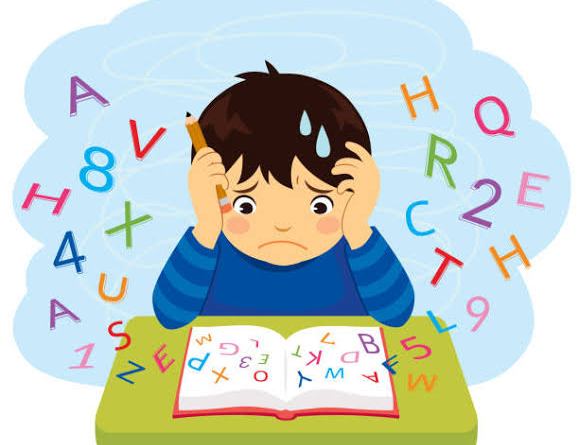Understanding Learning Difficulties: A Comprehensive Guide
Learning difficulties encompass a range of neurological conditions that affect the acquisition, organization, retention, understanding, or use of verbal or nonverbal information.
These challenges can impact reading, writing, mathematics, reasoning, listening, and speaking. Recognizing and understanding these difficulties is crucial for early intervention and support.
- What Are Learning Difficulties?
- Prevalence and Statistics
- Types of Learning Difficulties
- 1. Dyslexia
- 2. Dyscalculia
- 3. Dyspraxia
- 4. Dysgraphia
- 5. ADHD (Attention Deficit Hyperactivity Disorder)
- Signs and Symptoms
- Diagnosis and Assessment
- Impact on Individuals
- Learning Difficulties in Adults
- Learning Difficulties in the Classroom
- Support and Intervention Strategies
- FAQs
- Conclusion
What Are Learning Difficulties?
Learning difficulties, often referred to as learning disabilities, are neurologically-based processing problems. These processing issues can interfere with learning basic skills such as reading, writing, or math.
They can also hinder higher-level skills such as organization, time planning, abstract reasoning, long or short-term memory, and attention.
Prevalence and Statistics
Understanding the prevalence of learning difficulties helps in recognizing their impact and the importance of support systems.
Global and National Statistics
| Learning Difficulty | Prevalence | Source |
|---|---|---|
| Dyslexia | 5-15% globally | Kutest Kids |
| Dyscalculia | 3-6% globally | Wikipedia |
| Dyspraxia (Developmental Coordination Disorder) | 5-6% globally | Wikipedia |
| Specific Learning Disorders in India | 8% among children | PubMed |
Types of Learning Difficulties
Learning difficulties can be categorized based on the specific challenges they present:
1. Dyslexia
- Symptoms:
- Difficulty in reading fluently.
- Problems with spelling and writing.
- Challenges in decoding words.(The Times)
- Statistics: Affects approximately 5-15% of the population globally.(Nikolaroza)
2. Dyscalculia
- Definition: A learning difficulty that affects a person’s ability to understand numbers and learn math facts.(Wikipedia)
- Symptoms:
- Problems with math calculations.
- Challenges in telling time and estimating numbers.(The Scottish Sun, Nikolaroza)
- Statistics: Affects about 3-6% of the population.
3. Dyspraxia
- Definition: Also known as Developmental Coordination Disorder, it affects physical coordination.(Wikipedia)
- Symptoms:
- Poor balance and coordination.
- Difficulty with tasks requiring fine motor skills.
- Challenges in planning and executing movements.(Wikipedia, upandupaba.com)
- Statistics: Affects approximately 5-6% of children and adults.(Wikipedia)
4. Dysgraphia
- Definition: A writing disorder associated with impaired handwriting, orthographic coding, and finger sequencing.
- Symptoms:
- Illegible handwriting
- Inconsistent spacing
- Poor spelling and grammar
- Intervention:
- Occupational therapy
- Use of assistive technology
5. ADHD (Attention Deficit Hyperactivity Disorder)
- Definition: A neurodevelopmental disorder characterized by inattention, hyperactivity, and impulsivity.
- Symptoms:
- Difficulty sustaining attention
- Impulsiveness
- Hyperactivity
- Intervention:
- Behavioral therapy
- Medication
- Educational accommodations
Signs and Symptoms
Recognizing early signs can lead to timely interventions. Common indicators include:
- Reading Difficulties: Struggling with reading comprehension, decoding words, or reading fluently.
- Writing Challenges: Poor handwriting, spelling errors, and difficulty organizing thoughts on paper.
- Mathematical Struggles: Difficulty understanding number concepts, memorizing math facts, or solving problems.
- Attention Issues: Inability to focus, easily distracted, or hyperactivity.
- Motor Skill Problems: Clumsiness, trouble with tasks requiring coordination.
Diagnosis and Assessment
Early diagnosis is crucial for effective intervention. Assessments typically involve:(PubMed)
- Educational Testing: Evaluates academic skills and identifies specific areas of difficulty.
- Psychological Evaluation: Assesses cognitive functions, memory, and processing skills.
- Medical Examination: Rules out other conditions that might mimic learning difficulties.
In India, tools like the NIMHANS Index for Specific Learning Disability are used for assessment.(PubMed)
Impact on Individuals
Learning difficulties can have wide-ranging effects:
- Academic Challenges: Struggles in school can lead to lower grades and increased dropout rates.
- Emotional and Behavioral Issues: Frustration and low self-esteem can result from ongoing academic struggles.
Learning Difficulties in Adults
Learning difficulties persist into adulthood, affecting employment, relationships, and daily tasks. Adults may experience challenges such as:The Treetop
- Workplace Issues: Difficulty meeting job expectations, organizing tasks, or following instructions.
- Time Management: Struggles with punctuality and meeting deadlines.
- Communication: Challenges in expressing thoughts clearly or understanding complex information.
Support includes workplace accommodations, adult education programs, and counseling services.
Learning Difficulties in the Classroom
Educators play a pivotal role in supporting students with learning difficulties:
- Differentiated Instruction: Adapting teaching methods to meet diverse learning needs.
- Classroom Accommodations:
- Extended time on tests
- Preferential seating
- Use of assistive technology
- Collaboration: Working with special educators, parents, and therapists to develop effective strategies.
Inclusive education practices ensure that students with learning difficulties receive equitable learning opportunities.
Support and Intervention Strategies
Effective support can mitigate the challenges posed by learning difficulties:
- Individualized Education Programs (IEPs): Tailored educational plans to meet specific needs.
- Specialized Teaching Methods: Multisensory instruction and structured literacy programs.(AP News)
- Assistive Technology: Tools like text-to-speech software and audiobooks.(upandupaba.com)
- Therapeutic Support: Occupational therapy for dyspraxia, counseling for emotional support.
- Occupational Therapy: Improves motor skills and daily functioning.
- Speech Therapy: Addresses language and communication challenges.
- Behavioral Therapy: Helps manage behaviors associated with ADHD.
FAQs
Are learning difficulties the same as intellectual disabilities?
No, learning difficulties are specific challenges in certain areas like reading or math, whereas intellectual disabilities involve limitations in general mental abilities.(Wikipedia)
What is the difference between a learning difficulty and a learning disability?
A: The terms are often used interchangeably, but “learning disability” typically refers to a diagnosed condition that significantly impairs learning, while “learning difficulty” can be a broader term encompassing various challenges in learning.
Can learning difficulties be cured?
While they cannot be “cured,” with appropriate support and strategies, individuals can manage and overcome many challenges associated with learning difficulties.
How early can learning difficulties be identified?
Signs can appear as early as preschool, but formal diagnosis often occurs during the early school years.
How can parents support children with learning difficulties?
Parents can:
- Collaborate with educators and specialists
- Provide a supportive home environment
- Encourage and celebrate progress
- Seek external resources and support groups
Conclusion
Understanding learning difficulties is essential for providing the necessary support to those affected. With early identification, tailored interventions, and ongoing support, individuals with learning difficulties can achieve their full potential.
Note: For a comprehensive list of resources and support organizations, please refer to the external links provided in the article.





